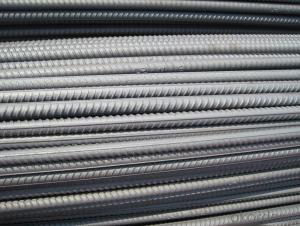Reinforcing Bar Price: Factors That Influence Cost
When it comes to constructing a building, one of the critical elements that contribute to its strength and durability is the reinforcing bar, commonly known as rebar. These steel bars are embedded in concrete to provide additional support and prevent cracking. But, have you ever wondered what determines the price of these essential construction materials? Let’s dive into the factors that influence the cost of reinforcing bars and why they’re worth every penny.
Raw Material Costs
The first and foremost factor that affects the price of rebar is the cost of raw materials. Steel, being the primary component, is subject to market fluctuations. When there’s a surge in the demand for steel globally, the price of rebar tends to rise. Conversely, when the demand is low, the cost may decrease. It’s a simple supply and demand scenario that impacts the price you pay for rebar.
Manufacturing Process
The way rebar is manufactured also plays a significant role in determining its price. Advanced manufacturing techniques and high-quality machinery can increase the production cost, which is then reflected in the final product’s price. However, this often results in a better quality product that lasts longer and requires less maintenance, making it a worthy investment in the long run.
Quality and Strength
Not all rebar is created equal. The quality and strength of the steel used can greatly affect the price. Higher grade steel that can withstand more stress and has a longer lifespan will naturally be more expensive than lower grade steel. But, it’s essential to consider the longevity and performance of the rebar when making your purchase decision.
Transportation and Logistics
Transportation costs are another factor that can influence the price of rebar. If the manufacturing plant is far from the construction site, the cost of shipping the rebar to the site will add to the overall price. Additionally, the mode of transportation, fuel costs, and even the distance traveled can all contribute to the final cost.
Regulations and Tariffs
Government regulations and tariffs can also have an impact on the price of rebar. Import duties, taxes, and other regulatory fees can increase the cost of imported rebar, making it more expensive for consumers. It’s also worth noting that local rebar might be more affordable due to lower transportation and regulatory costs.
Market Competition
The level of competition in the market can affect the price of rebar. In a competitive market, manufacturers may lower their prices to attract more customers. On the other hand, if there are only a few manufacturers, they might charge higher prices due to the lack of competition.
Economic Conditions
The state of the economy can also influence the price of rebar. During periods of economic growth, the demand for construction materials like rebar increases, which can drive up the price. Conversely, during a recession, the demand may decrease, leading to lower prices.
Regional Differences
Lastly, regional differences can play a role in the cost of rebar. Different regions may have different costs of production, labor, and taxes, which can affect the final price of the rebar. It’s always a good idea to research the local market to understand the specific factors that may influence the price in your area.
In conclusion, the price of reinforcing bars is influenced by a multitude of factors, from raw material costs to regional differences. As a consumer or a contractor, it’s crucial to understand these factors to make informed decisions when purchasing rebar. Remember, investing in high-quality rebar may cost more upfront, but it can save you money and provide better performance in the long run.

